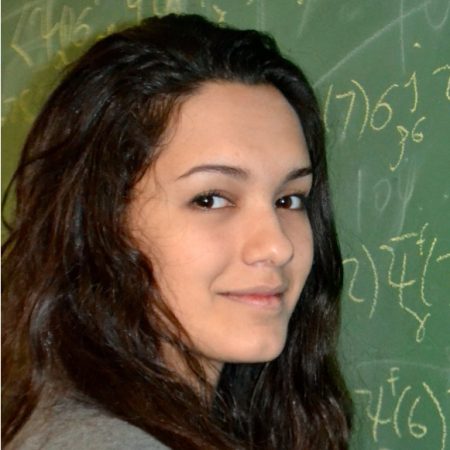
It was just an average day in seventh-grade when Kelly Ann Pawlak, then 12, discovered what she wanted to be.
“My math teacher brought in this video, ‘The Elegant Universe’ with (physicist) Brian Greene, and when it was over, I just knew,” Pawlak, now 21, recalled. “I went running home that afternoon and said ‘Mom, Dad, I want to be a physicist!'”
A seed of wonder had been planted: the idea that she could understand the entire world through mathematics.
Fast forward to 2014. Pawlak, now a Florida State University senior with a dual major in physics and applied and computational mathematics, is very close to realizing her middle-school dream. Both she and FSU physics doctoral student Sam Greer recently won a prestigious 2014 Graduate Research Fellowship from the National Science Foundation.
Each will receive $32,000 a year for three years, with an additional $12,000 annual allowance going directly to the graduate institution each attends.
Both work with FSU National High Magnetic Field Laboratory, or MagLab, scientists: Pawlak’s mentor is Oskar Vafek, an FSU associate professor of condensed matter physics; Greer’s is Stephen Hill, an FSU professor of physics and the director of the MagLab’s Electron Magnetic Resonance program.
For Greer, 23, the fellowship means he won’t have to spend 20 hours a week working as a graduate teaching assistant. Instead, he can spend that time working in the lab.
“This gives me more freedom to focus on science and do actual research,” he said.
For Pawlak, the fellowship is a total game-changer.
“What this does for me is, it really allows me to study what I want, where I want,” she said. “It’s life changing, it really is.”
Among the graduate schools Pawlak applied to was her No. 1 pick: the University of California at Santa Barbara. Its physics program is ranked the fifth best in the United States, she said, and 11th in the world. But her application was turned down.
She was accepted at her second choice school — but after winning the fellowship, she e-mailed UC to let them know she’d won the award. The school quickly replied that her application would be reconsidered. Two days later, she got the official word: She was accepted.

“I still can’t believe it,” she said. “It doesn’t get any better than this.”
Nor could she believe, at first, that she’d actually won the NSF fellowship, which this year received 14,000 applications and gave 2,000 awards to science students — 109 of whom are studying physics. Not only was she aware of the stiff competition, she also received the news by mail on April Fool’s Day.
“I thought, okay, which one of my friends is playing this trick on me? It’s not very nice!”
One person who wasn’t at all surprised, however, was her MagLab mentor Vafek. In addition to being her advisor and teacher, he also coached her through the NSF application process.
“What distinguishes Kelly, in my opinion, is her originality, her enthusiasm and her inner drive,” Vafek said. “She’s a very hard worker.”
Pawlak is currently interested in superconductors, or materials that conduct electricity without resistance if kept super cold. Specifically, she’s intrigued by unconventional superconductors, or materials that display superconductivity in unexplained ways. Now, thanks in part to that fellowship, she’s eager to move forward with her studies.
“I came to FSU because I thought the MagLab sounded really cool, and I thought it would give me an advantage in research — which it obviously has,” she said. “Now I’m feeling like all those nights I stayed at home in my room studying really paid off, too.”
Vafek said he’s proud of her — and continues to expect great things.
“She strives to navigate with fluency the singular landscape of theoretical physics,” he wrote in an email, “and I view such focus as a harbinger of future success in her research career.”




